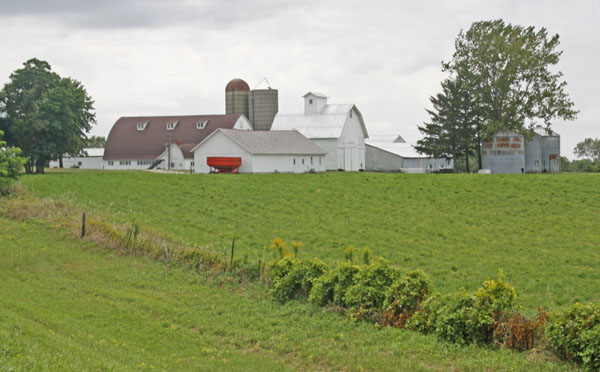The prices being paid for farmland across Illinois continue their upward spiral with the tops being in the $10,000 to $13,000 per acre range across the state. This is according to the 2012 Farmland Values and Lease Trends Report released today by the Illinois Society of Professional Farm Managers and Rural Appraisers at its annual Land Values Conference.
The top price of $13,000 per acre was for a November 2011 sale of 37.7 acres in Christian County. The property was listed as having Excellent quality land. Sales in the $10,000 per acre range were common across a number of regions in the state.
“A good part of this tremendous move in Illinois crop land values is based on increasing farm income returns, and expectations of strong income into the future,” says Don McCabe, AFM, general chairman of the Land Values Survey and Conference. McCabe, with Soy Capital Ag Services, is also licensed as a Real Estate Broker in Illinois and Indiana.
Respondents indicated that farmland values increased between 20 and 21 percent across land classes during 2011, says Gary Schnitkey, Ph.D., Department of Agriculture and Consumer Economics, University of Illinois. “Prices of excellent productivity farmland was estimated at $8,690 per acre price on January 1 and $10,460 per acre price on December 31st, an increase of 20 percent during the year. Good quality farmland price was esti- mated at $7,490 at the beginning of the year and $8,980 at the end of the year, an increase of 20 percent. Aver- age farmland’s price was $6,080 per acre at the beginning of 2010 and $7,330 at the end of year, an increase of 21 percent. Fair productivity farmland’s price was $4,880 at the beginning of the year and $5,900 at the end of the year, indicating a price increase of 21 percent.”
Land price increases in 2011 were large compared to averages. Average yearly increases in land prices have av- erage 6.7 percent across all of Illinois between 1970 and 2011. Yearly increases have averaged 12 percent from 2005 to 2011.
Rents Rising As Well
“Given the variability of land quality and regions, and the aggregation of data over many sale and rent observa- tions, the traditional relationship of the market to price land at levels where income results in a “cap rate” of 3 percent to 5 percent continues to hold. Rents drive the rate of return in relation to land values; land prices do not trigger or cause rental returns,” McCabe explains.
According to survey results, traditional fixed cash rent leases increased for 2012 to 32 percent of all farm oper- ating arrangements. All other types, totaling 68 percent, include a variety of crop share and variable cash rent leases, and custom farming contracts. This 68 percent majority of farm operating agreements include features where the landowner shares, in some way, in the farm’s crop production and/or price risk, and is rewarded when yields and prices are good.
Cash rents increased a great deal between 2011 and 2012, Schnitkey explains. “For excellent quality farmland, rents increased $60 per acre from $319 per acre in 2011 to $379 per acre in 2012. Increases were $60 per acre for good quality farmland, $50 per acre for average quality farmland, and $35 per acre for fair quality farmland.

